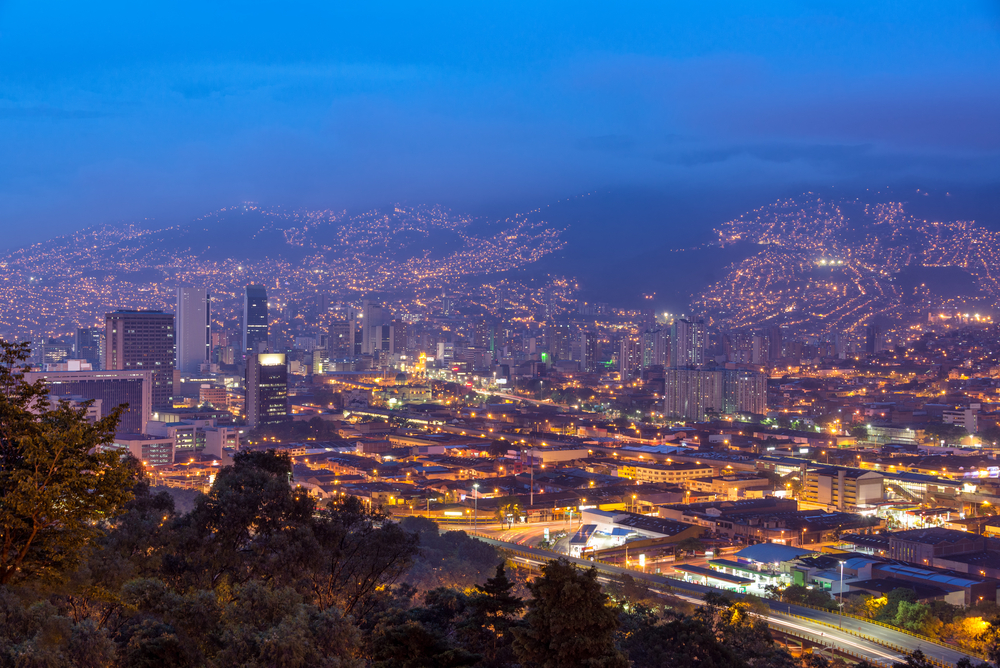For people of my generation — the very tail end of the “baby boomers” — the adjective “Colombian” triggers a pattern of neuron firing that produces a memory with nothing to do with offshore investments, real estate, or residence. That’s because back in the day, the best variety of cannabis came from the South American country of that name. Even if you never inhaled, you knew about it. Of course, Colombia was also the place where coffee farmer Juan Valdez grew his crop, but we were too young to drink that stuff.
The failed War on Drugs turned Colombia’s fairly benign cannabis industry into a violent and destructive cocaine empire that nearly destroyed the country through a combination of corruption and insurgency. Then, out of nowhere, Colombians got their act together and turned their country into one of South America’s modern success stories.
I absolutely love when countries do this. An entire generation (or two) of Americans comes of age thinking a place is a no-go zone. Then the country gets its act together, and turns out to be really nice. The great thing is that until people figure that out, places like Columbia provide outstanding value for those interested in offshore investments or living.
That’s precisely where Colombia is right now.
Timing Is Everything for Offshore Investments
As a musician, I’m keenly aware that a subtle difference in timing can distinguish mediocre players from the true geniuses. The same goes for comedy. A pause of just the right length turns a bad pun into a brilliant line.
The same is true of countries.
I’ve written several times about how my second home, South Africa, turned its back on apartheid and global isolation, just as the Cold War was ending and emerging markets were about to explode during the long ‘90s boom. Not everything has worked out as well as I’d hoped, but property prices have soared, and I’ve made out like a bandit. The home I bought 20 years ago is now worth over 10 times what I paid for it in real, inflation-adjusted terms. My rental income from it is on par with U.S. returns.
Similar things have happened in many countries, some of which are on Americans’ “offshore” radar screens, some not. Much of Eastern Europe, for example, has seen similar changes. Newcomers to this trend include Sri Lanka, Vietnam and now, Cuba. People who get in early to “re-emerging markets” like Colombia can do very well for themselves if they act when the time is right.
Colombia Resurgens
Columbia turned a corner about seven years ago. Under the presidency of Álvaro Uribe, crime fell dramatically. The drug wars subsided and the country lost its top cocaine-exporter spot. The long-running insurgency was wound down, and a final peace treaty is now in sight. Government backed off the economy, and growth returned. Uribe’s successor, Juan Manuel Santos Calderón, has continued on the path he set.
To add to the good news, Colombia is now one of only three economies with a perfect score on the World Bank’s legal rights index. That means the legal system isn’t only good — it’s applied as written. That’s more than you can say for many places, including the U.S.
Colombia is rich in natural resources, including oil, and is highly export-oriented. It’s an important global source of emeralds, while it supplies over 70% of cut flowers imported into the United States. Its principal trading partners are the U.S., China and the European Union. That means it is set up to do well when the world economy does.
With all of this progress, foreign tourist visits to Colombia rose from 0.6 million in 2007 to almost 3 million in 2015. But as anyone who has been there can tell you, getting around can be a real hassle. Civil and drug war led to neglect of transport infrastructure, and the interprovincial highways are two-lane affairs — one in each direction — of the sort I’ve experienced many times. For now, people fly from city to city if they can, and many of the smaller regional centers remain largely unknown to tourists.
But, like Panama to the northwest, the country is investing heavily in infrastructure projects, including highways, high-speed trains, hydroelectric projects and mining and oil exploration. Colombia plans to have a U.S.-style interprovincial highway system in place by the mid-2020s. As I wrote recently, improved transport means big changes to property values in places that are suddenly accessible and investable.
Good Gettin’
Uruguay, another favorite, has benefited greatly from the strength of the dollar because it’s made local real estate less expensive to foreign investors. Like the Uruguayan currency, the Colombian peso is down about 30% relative to its historical level against the U.S. dollar … not because the Colombians are doing anything wrong, but because the dollar is insanely overvalued.
Uruguayan properties are relatively inexpensive right now because the Argentine economy, which drives the property market, has been in turmoil. But compared to that, Colombian property is dramatically undervalued. Right now, you could acquire a 2,000 square-foot apartment in Medellin, for example, for a little over $200,000. Owning it would give you Colombian permanent residence, with which you can apply for a passport after five years. If you invested as little as $30,000 in a property syndicate, you’d get permanent residence after five years, and citizenship two to five years after that.
So, like my colleague Jeff Opdyke constantly reminds us with respect to global stock markets, now is the perfect time to use the overvalued U.S. dollar, with its terrible prospects, to buy undervalued, high-quality assets — including a second passport — in a country with a great future.
Like Uruguay, Columbia would be a great place to start.
Kind regards,

Ted Bauman
Offshore and Asset Protection Editor






